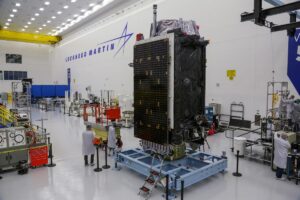
U.S. Space Force's Space Systems Command has finished the first of three critical design reviews for the planned Military GPS User Equipment (MGUE) Increment 2. L3Harris [LHX], Raytheon Technologies [RTX] and BAE Systems have received funding under MGUE Increment 1 and are developing cards for MGUE Increment 2. "Space System Command’s Military GPS User Equipment Increment 2 program successfully held the BAE Application Specific Integrated Circuit (ASIC) Critical Design Review (CDR), May 23-25, with no significant liens recorded," SSC said on June 20 in an…














